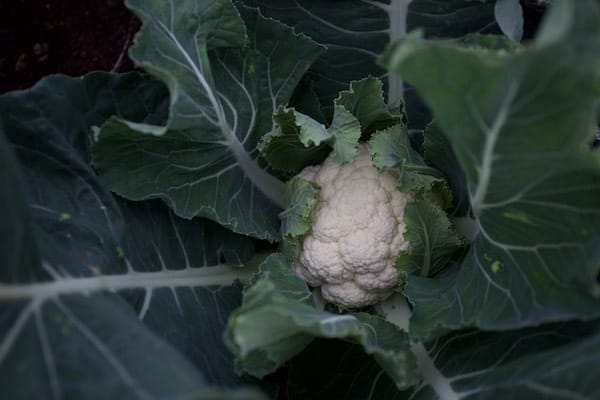So much growth
June is a wonderful time, if you can keep up with everything happening. When I'm out in the garden, I'm seeing plants needing attention, beds needing new plants, seeds to sow and harvests to gather.
And then there is watering. I have no irrigation system for the half acre of cropped ground, and apply water where most needed. It takes time but it's very economical with water, as is the no dig method. We have had 35 mm / 1.4" rain so far in June, not enough but very helpful.

A new woodchip pile arrived 13th June from Andrea Maistrello, local tree surgeon. There are many leaves, it’s quite green and is 55°C after watering.
There is now a lot of waste green matter to compost. From crop residues to grass clippings, hedge trimmings, weeds and kitchen wastes.
I put everything in the compost. Much of it is now ‘green’ (fresh, nitrogenous) in composting terms. So I have found that it pays to carry a stock of ‘browns’ such as this woodchip.
It can also be old tree leaves, woody prunings, cardboard, paper and more.
See my Compost book for details and explanations.

Nine months later, 12 mm / half inch sieved woodchip from Andrea looks like this and I use it as a brown in composting. It’s fine that there is much conifer, that does not affect soil pH
When you are adding a lot of green material, heat will happen. If you have less material to compost, the heap will stay cool and decompose in a more fungal manner.
This is fine, just takes longer, and does not to kill weed seeds. The resulting composed is actually often superior to the hotter, bacterial type.

Compost heap with thin layer of old sieved woodchip, on thicker layer of grass and plant wastes, it's 55°C and will probably soon be 65°C. That's hot enough.

Carrot seedlings 22 days after being intersown between lettuce, which are picked weekly and will finish in three weeks. The woody surface residue is from compost applied in December, 11 months old and although the wood looks a lot, it’s a very thin layer
Sow now and sowing video
Now it’s good to sow more brassicas: cauliflower for autumn, savoy cabbage for winter and broccoli for overwintering.
Sow root vegetables such as beetroot and carrots. The former is good multisown to transplant, the latter direct, even between other plants such as lettuce that finishes soon.
Continue to sow salads, mainly lettuce. Sow brassica salads in early August, after their flowering season, and when flea beetles are fewer.
Follow me on Instagram for updates.

Propagation mid-June is lettuce, leeks, cabbage, Brussels, and lots more
Parsnips can still be sown, before the end of June. It's not always easy in summer, because you need to keep the sown area moist for two weeks, to allow seeds to germinate. After finishing this newsletter, I’m out there watering the parsnip beds.

Sowing parsnips 4th June - beyond is new compost after clearing overwintered chard.

New planting of Trafalgar F1 Brussels sprouts, and salad onions interplant
Cucumbers
See my recent tour video for more on this and many other topics.
Cucumbers can be fragile, and some of my polytunnel plants have suddenly wilted at the top. I mentioned it in the video and from the comments, it sounds like a few of you have a similar problem.
Possible causes are big differences in night and day temperatures, moisture shortage on a hot afternoon, and bacterial infection. There are no aphids.

Cucumber Carmen F1 sadly afflicted, uncertain problem
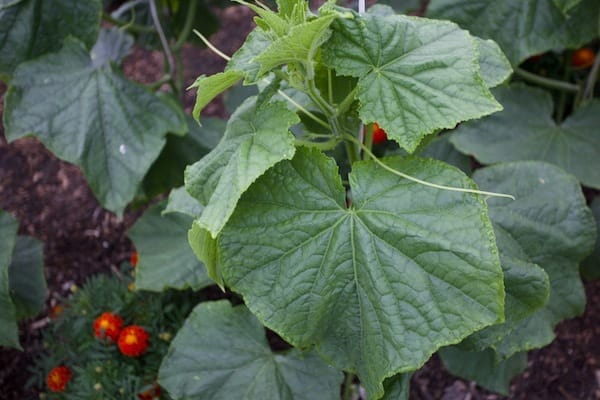
Plant of the same batch, growing next to the damaged one
By comparison, the outdoor cucumbers are looking superb. They have been under fleece which I removed yesterday.
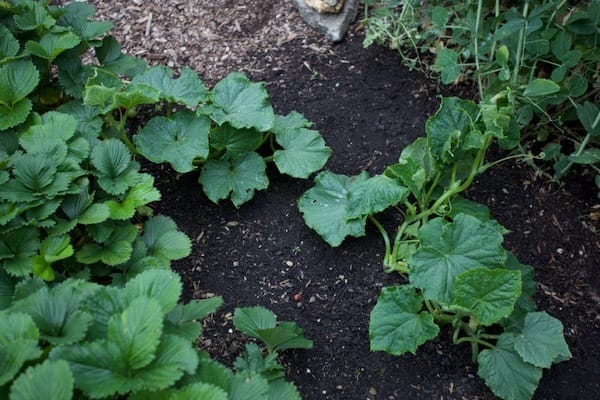
Cucumber Tanja outdoors in the small garden is super healthy, needs space now to grow lots
Aphids
There have been many this spring. I wash them off and just aim to keep them under control.
Until now, when the predators are arriving. I'm seeing many hoverflies and ladybirds. Ladybird larvae eat a lot of aphids.

Aphids on polytunnel aubergine and a ladybird larva
Tomatoes
Most plants are growing strongly, apart from some leaf roll. I notice this mostly on beef tomato plants, some varieties more than other. It's a symptom of large differences between night and day temperature. I see it much less on outdoor tomatoes.
I am still watering tomato plants with the overhead spray in the polytunnel. It's too early to worry about late blight, until possibly early July.
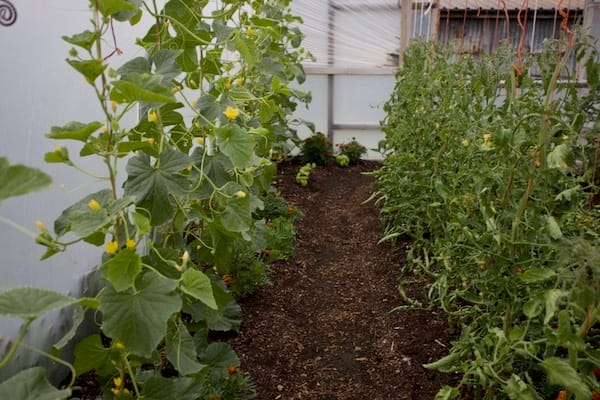
Melons and beef tomato in the polytunnel mid-June. There’s a lot of leaf roll on the tomato plants’ lower leaves.
I'm loving the determinate pot plants in my greenhouse, Maskotka from Poland. The flavour is good and they are so welcome for being early to harvest.
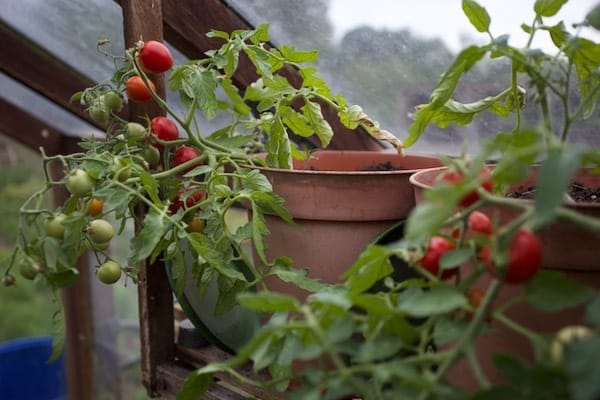
Maskotka first fruits 14th June
No Dig Events
Please see the events page of my website for more details of lovely things coming up.
I'm speaking June 21st next Saturday, at a local Somerset festival, Sacred Earth. There will be a top No Dig crew there! Including the founders of Roots Allotments, Kate Forrester from Four Acre farm in Hampshire, and Cameron Wheeler from Five Rod farm in Suffolk.
On 19th and 20th July I give no dig workshops in the glorious setting of Woodlands Hotel in Adare, Co. Limerick, Ireland. I'm greatly looking forward to seeing the garden, one of the top organic market gardens of Ireland.
Homeacres open day is 6th September, you need to book.
The open afternoon on 8th June was blessed with fine weather and a good crowd.

Homeacres 8th june with other Alhampton gardens open. Next year it will be 17th May.

Seeding plants in the polytunnel side bed are lettuce, spinach, onion, and mustard at the back
Seed Saving
There are many options now. See this new video on YouTube, where I show you what I'm doing in my poIytunnel.
I also mention the workshop in Germany 13th + 14th September at Bingenheimer Saatgut seed company. I'm certainly looking forward to seeing their place, and the no dig market garden next to it.

Dwarf French beans in front had fleece over, while the runner beans went in later from sowing 8th June


